
views
X
Research source
By making sure to set aside some time daily and vary your yoga practice, you can easily fit yoga into your routine every day.
Incorporating Yoga into Your Schedule
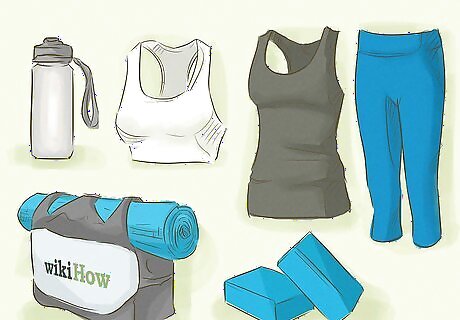
Have your yoga gear ready to go. If you want to practice yoga every day, always have your yoga gear ready to practice at home or in the studio. This can help prevent you from finding excuses to not practice daily. You will need a yoga mat and may want props such as a yoga belt, yoga block, and a large blanket or bolster at hand, too. These pieces of equipment can help improve and deepen your yoga practice as well as making it more comfortable. You can buy mats and props at sporting goods stores, yoga studios, or at online yoga retailers. You don’t necessarily need special yoga clothing but try wearing something comfortable that isn’t too tight.

Decide when and how long you want to practice. While there is no best time to do yoga, many people like to practice at the same time every day. This can help you ensure that you practice every day. Some people like to practice yoga first thing in the morning. Not only can this energize you, but can also keep you from making excuses to not practice later in the day. Others prefer practicing in the evening to help them sleep. Some people find that keeping to a routine of the same time and the same place each day is most beneficial. Your mind and your body will associate that time and place with yoga sessions, which can serve as great internal motivation. Be sure to pick a time when you know there will be no interruptions or distractions, such as early in the morning or late at night. Even if it doesn’t help you to always practice at the same time and place, make an effort to schedule specific times for your practice. Planning ahead can help you stay consistent. You can practice yoga for however long you like. It might be anything from a few rounds of sun salutations to a full 90-minute session. You might consider practicing for different lengths of time each day so that you don’t burn out.
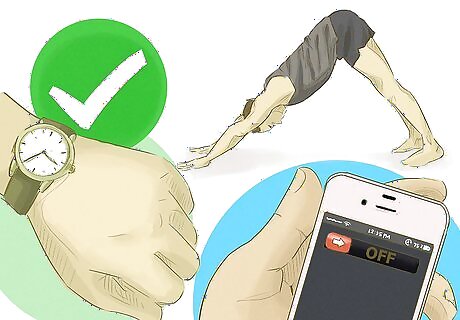
Designate time for yourself every day. Set a specific time for your yoga practice every day. Make sure all that electronics are turned off or unplugged, no one is coming over, and everyone in your household is either not home or otherwise occupied. Let others know that your yoga practice should not be disturbed except in an emergency. Many yoga classes are 60-95 minutes, but you may not be able to make that much time. Even if you only have 10 minutes per day, you can still reap the benefits of yoga. If you have children, try to find someone to watch them while you do your yoga practice. You could also do yoga during their naps or even consider inviting the kids to do yoga with you!
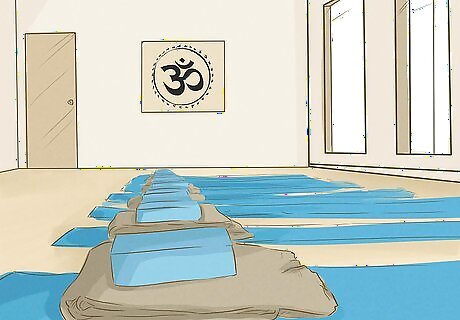
Find a comfortable place to practice. You can try yoga at home or in a professional studio. Either way, it’s important to find a designated space so that you can comfortably and easily dedicate yourself to your daily practice. Make sure the place you choose to practice is peaceful and still so that no one can disturb your focus. You can try different types of studios, and yoga groups if you don’t want to practice at home. Experiment with the different studios near you to find a studio and instructor that you like. You also don’t have to limit yourself to one studio or instructor. Varying your yoga classes can help you establish your practice and keep it from getting boring. If you want to practice at home, make sure you’ve got plenty of room to move and a way to close yourself off to the outside world.
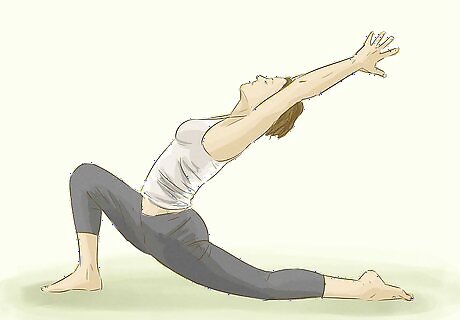
Expect gradual improvement. Daily practice will start to flow through in evident changes in your life, but it won't happen immediately. Sometimes you might feel as though you’re not progressing at all. Give it time and suddenly you may realize that your daily practice is beneficial and having a positive impact on the rest of your day. Don't make a huge issue out of missing a day here and there. It happens, just pick up from where you left off. Body memory is powerful, so let your body ease back into it without allowing your mind to infect it with anxiety over missed practices!
Varying Your Daily Practice
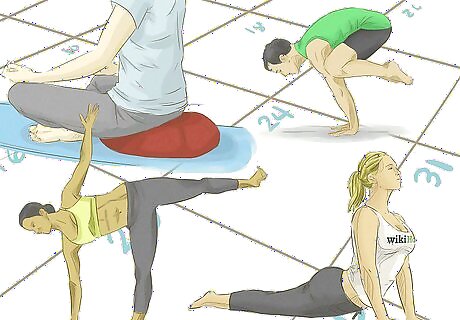
Be regular, not rigorous. It is better to practice yoga every day for a few minutes than to push yourself into a long practice on an irregular basis. Do whatever asanas you like and perfect them before moving on to more difficult poses. Remind yourself that it is better that you're doing some yoga than none at all. Avoid adopting a negative mindset in which you tell yourself you "can't" do certain poses. You can, it just may take some (or a lot of) time. Practice regularly and build up poses that lead into the more difficult ones.
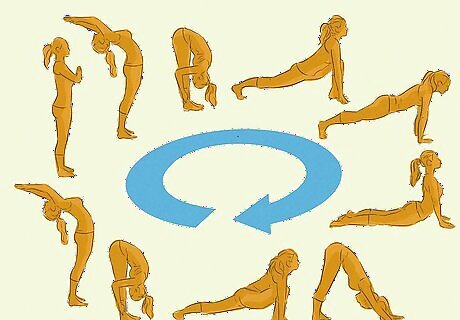
Sequence a well-balanced daily practice. “Sequencing,” or putting together asanas that make up a yoga practice, is one of the most difficult parts of practicing yoga, especially if you are doing it at home. Set up different sequence for yourself every day based on the basic formula that most yoga classes follow to help yourself get the most benefits from the practice and keep you from getting bored. Start your practice with a short meditation and chanting exercise to calm your mind and center your thoughts. Set an intention for your practice just before you begin to practice. Move from a warmup of sun salutations to standing poses, then progress through inversions, backbends, forward bends, and end with savasana, or corpse pose. Always end your practice with a final relaxation pose. Consider having a mixture of easy and difficult sessions, as well as short and long practice times.
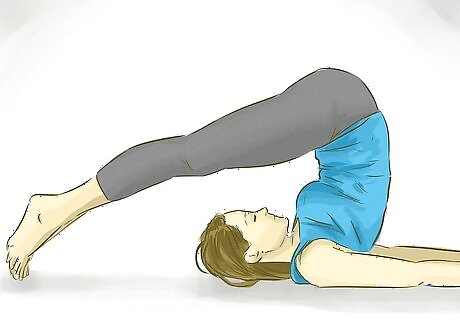
Incorporate different asanas. You do not have to be able to do every yoga asana in existence to have an effective daily practice. Incorporating and mastering different poses from each of the 4 types of asana can help you put together a daily practice which won’t get boring or routine. Make sure to start with easier asanas and move on to more difficult poses as you master basic ones. Do asanas from each type of pose in the following order: standing poses, inversions, backbends, and forward bends. Add a twisting asana to neutralize and stretch your spine between backbends and forward bends if you like. Hold each asana for 3-5 breaths. Add standing poses such as vrksasna (tree pose) or the Warrior Series, which is known as Virabhadrasana I, II, and III. As you progress, you can incorporate other standing poses, such as Utthita Trikonasana (Extended Triangle Pose) and Parivrtta Trikonasana (Revolved Triangle Pose). Add inversions, including mukha vrksasana (handstand), on a wall, until you have enough strength to hold yourself up. Gradually add forearm balance and salamba sirsasana (headstand) as your practice improves. Add backbends including salabhasana (locust pose), bhujangasana (cobra pose), or setu bandha sarvangasana (bridge pose). Work up to dhanurasana (bow pose) and urdhva dhanurasana (full wheel or upward bow). Add a twist if you need a balance between backbends and forward bends. Twists can get quite deep, so start off with simple variations such as Bharadvajasana (Bharadvaja’s twist) before moving on to more difficult asanas such as ardha matsyendrasana (half lord of the fishes pose). Add forward bends such as paschimottanasana (seated forward bend), janu sirsasana (heat of the knee pose), or tarasana (star pose) and hold them each for 8-10 balanced breaths. Finish active practice with closing postures such as salamba sarvangasana (supported shoulder-stand), matsyasana (fish pose), viparita karani (legs up the wall pose). End your practice in savasana (corpse pose) and enjoy the benefits of your yoga session.

Change up what you chant. If you enjoy chanting mantras before or after your yoga practice, change up which mantra you’re chanting to mirror either your daily intention or how you’re feeling that day. Each mantra has different vibrations and you want to find one that corresponds to your intention. Repetition of mantras can help you disconnect from stress you may feel and also help keep you focused on your intention. Some examples of powerful mantras include: Om or aum is the most basic and powerful mantra you can chant. This universal mantra will create powerful, positive vibrations in your lower abdomen. It is often combined with the mantra “Shanti,” which means peace in Sanskrit. You can repeat aum as many times as you wish for your chanting. Maha mantra, which is also called either the great mantra or Hare Krishna, can help you achieve salvation and peace of mind. Repeat the entire mantra as many times as you like. Its words are: Hare Krishna, Hare Krishna, Krishna Krishna, Hare Hare, Hare Rama, Hare Rama, Rama Rama, Hare Hare. Lokah samastha sukhino bhavantu is a mantra of cooperation and compassion and means “May all beings everywhere be happy and free, and may the thoughts, words, and actions of my own life contribute in some way to that happiness and to that freedom for all.” Repeat this mantra 3 or more times. Om namah shivaya is a mantra that reminds us of our own divinity and encourages self-confidence and compassion. It means “I bow to Shiva (the supreme deity of transformation who represents the truest, highest self).” Repeat the mantra 3 or more times.




















Comments
0 comment